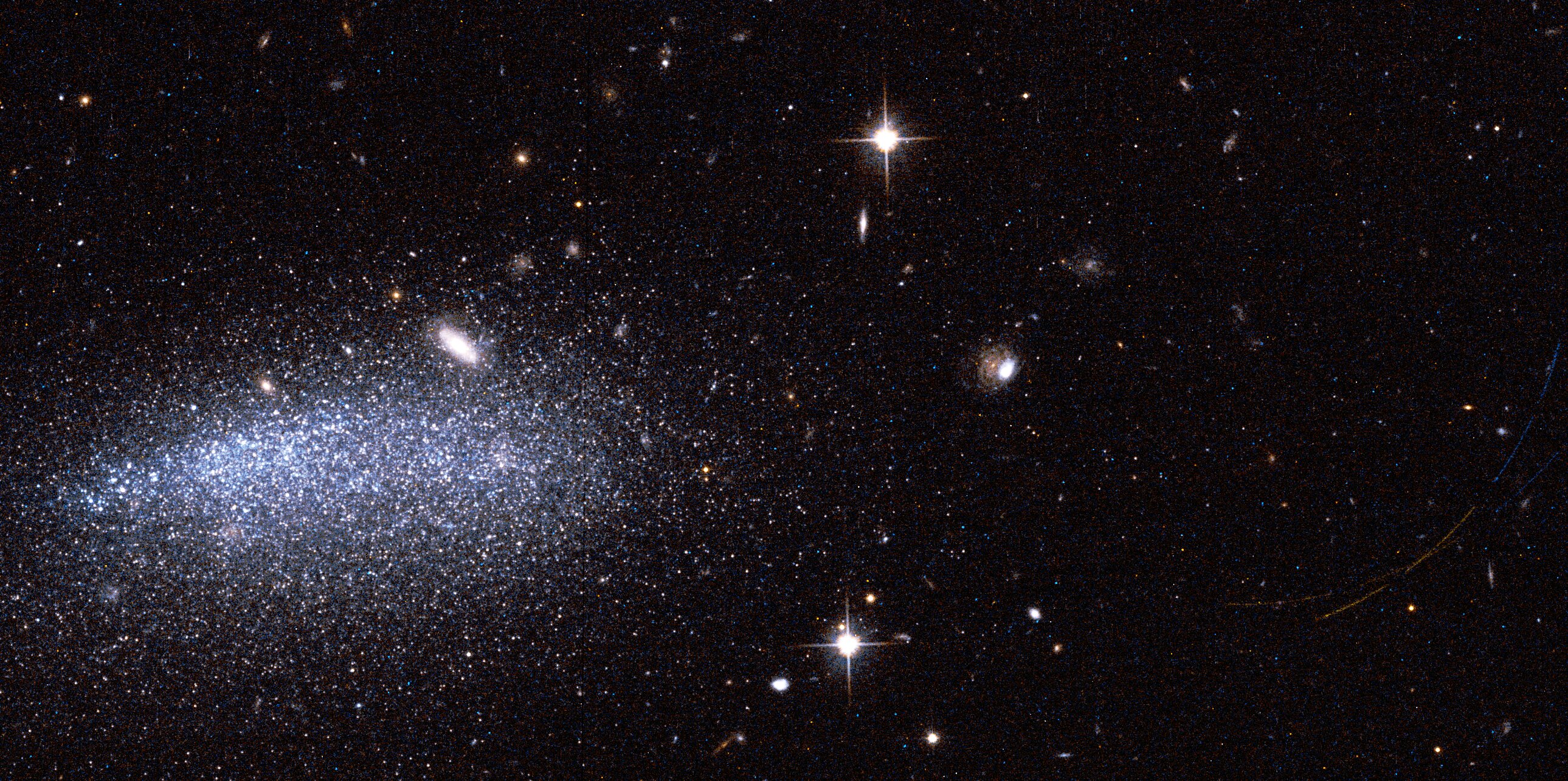

Credit: ESA / Hubble and NASA; J. Cannon (Macalester College)
At first glance, this image from the NASA / ESA Hubble Space Telescope portrays the bright stars of AGC111977, a dwarf galaxy located about 15 million light-years away and visible in the lower left of the image. Other galaxies are scattered across the frame, along with foreground stars from our own galaxy, the Milky Way.
Upon closer inspection, something else comes into view, much closer to home. Towards the lower right corner of the frame, two elongated stripes are barely visible: the tracks of asteroids (small rocky bodies in our Solar System) that intersect in the foreground of the stars and galaxies that Hubble was observing.
The image combines observations obtained on November 16, 2012 with the Hubble ACS instrument using two different filters (606nm, shown in blue, and 814nm, shown in red). As the asteroids moved relative to Hubble during observation, both tracks were subsequently photographed on each filter, and therefore appear partly red and partly blue.
The two asteroids are located at different distances from us, so they didn’t actually collide as their intersecting stripes might suggest. They were discovered by citizen scientists Sovan Acharya, Graeme Aitken, Claude Cornen, Abe Hoekstra and Edmund Perozzi, some of the volunteers who have been inspecting images of the iconic space telescope for rocky intruders as part of the Hubble Asteroid Hunter citizen science project. .
Launched a year ago, on International Asteroid Day 2019, Hubble Asteroid Hunter is a collaboration between ESA and the Zooniverse, inviting members of the public to identify asteroids that the Hubble Space Telescope observed by chance. Since then, 9,000 volunteers from around the world have provided 2 million ratings of 140,000 Hubble composite images, finding 1,500 asteroid tracks, about one in a hundred images.
In the first phase of the project, volunteers were able to explore a collection of Hubble stock images where calculations from ESASky’s Solar System Object Pipeline, ESA’s astronomy discovery portal, indicated that an asteroid may have been crossing the field of view of the space telescope at the time of the observations. The sheer numbers and enthusiasm of the volunteers led the team to expand the project, including more images of the sky collected by Hubble over the years.
In addition to asteroids, the volunteers have also identified trails left by satellites in higher orbits than Hubble’s, intriguing cases of gravitational lenses and ring-shaped features that arise when galaxies collide.
The project saw an increase in participation over the past few months as many people around the world stayed home due to the COVID-19 pandemic, which led to a triple increase in the number of classifications. Thanks to the continued efforts of volunteers, this citizen science project is nearing completion, with only the infrared images left to explore.
Meanwhile, the team is working to identify the asteroids that were discovered as part of the project, including the two depicted in this image, to possibly match them to the known asteroids in the Minor Planet Center database and calculate their distances from us. Stay tuned!
Image: Asteroid in the foreground passing the Crab Nebula
Provided by the European Space Agency
Citation: Image: Hubble captures a galaxy, two asteroids (2020, July 3) retrieved July 3, 2020 from https://phys.org/news/2020-07-image-hubble-captures-galaxy-asteroids.html
This document is subject to copyright. Other than fair dealing for private study or research purposes, no part may be reproduced without written permission. The content is provided for informational purposes only.